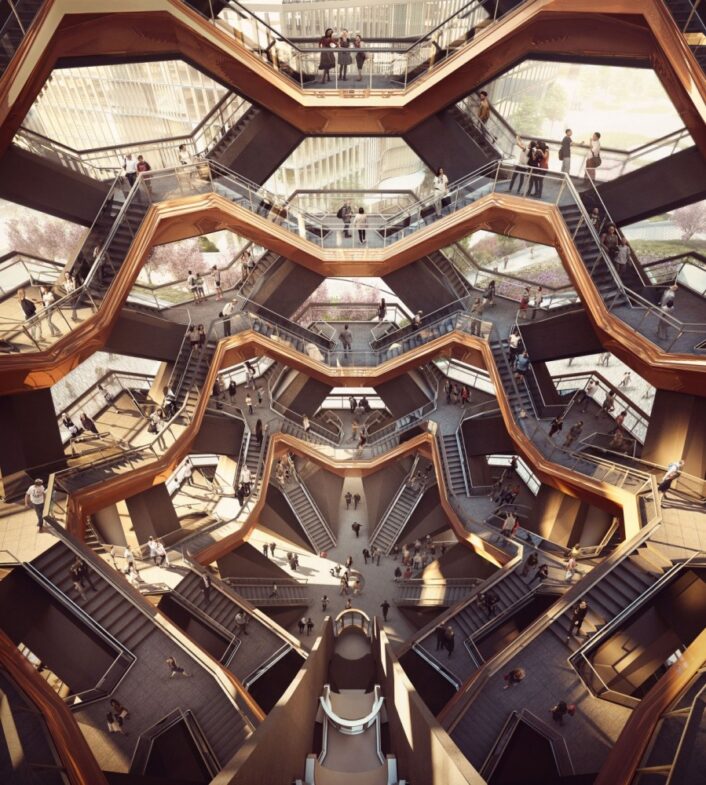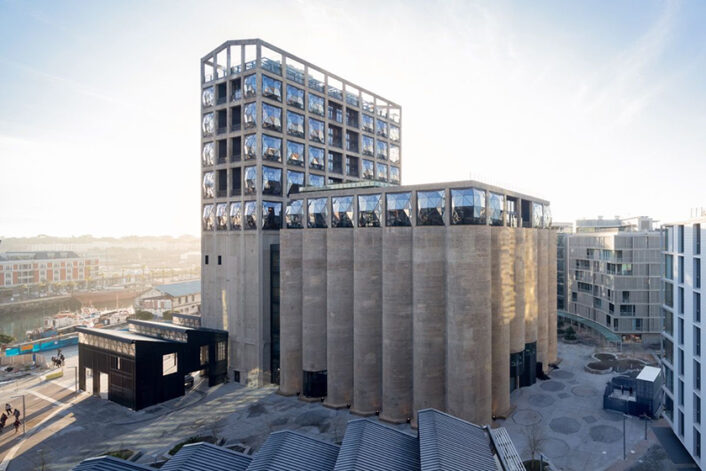Architecture
The Shed at Hudson Yards
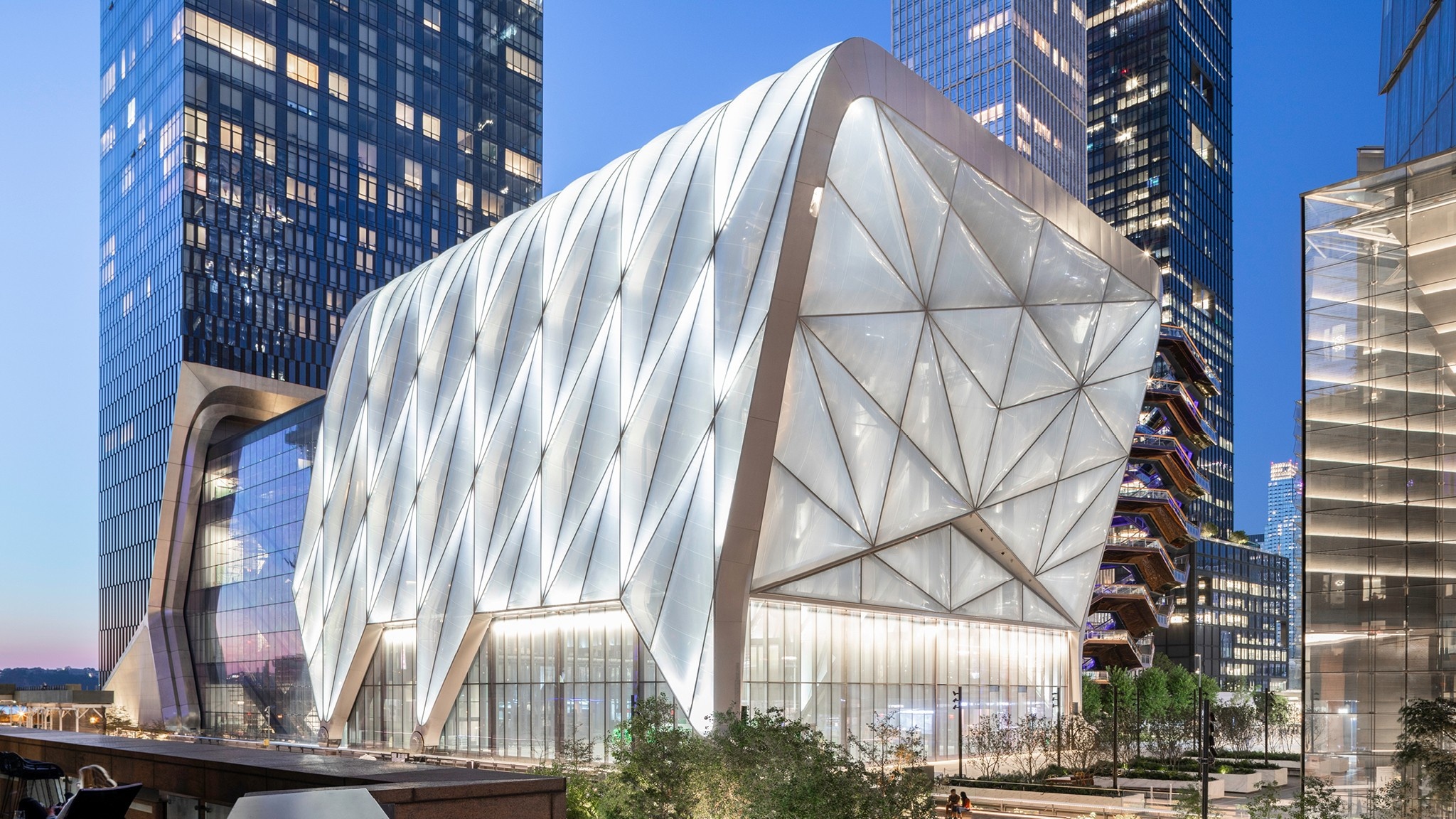
Inside the Shed, there are numerous galleries, the 500-seat Griffin Theater, and a multi-use hall called the McCourt that has been appropriated for large-scaled performances and installations.
Image courtesy of: The Shed
In 2019, prior to the pandemic that swept through the world, New York City’s Hudson Yards debuted a $475 million arts center that is intended for “all New Yorkers.” In other words, this new facility will be accessible to both ultra-wealthy city dwellers and those that can not afford to spend hundreds of dollars on cultural endeavors.
Hudson Yards has been the subject of criticism over the past few years; it is often referred to as the “billionaires’ playground.” Equipped with Thomas Heatherwick’s “Vessel,” the 28-acre, $25 billion project sits in the exact spot of the city’s earmarked location for the failed 2012 Olympic bid. However beyond the Cartier-esque stores and hair salons that charge $800 per haircut, the Shed stands out as the complex’s one truly public element.
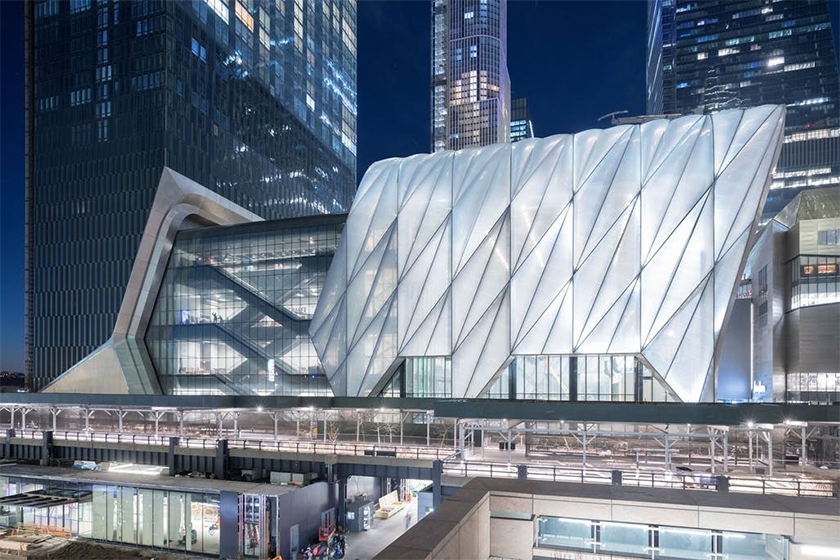
The modular building was designed in an adaptive way… it will be “responsive” to whatever changing needs artists might require in the future.
Image courtesy of: Arch Daily
The Shed was designed by Diller Scofidio + Renfro in collaboration with the Rockwell Group. The structure has a 120-foot tall telescopic shell which can extend out from the building’s base when it is being used for the largest performances.
The initial design was redesigned, (courtesy of The Guardian), Liz Diller, partner of Diller Scofidio + Renfro (DS+R) describes the modifications, “In 2011, Related asked us to get out of the way. The deployable building was getting in the way of people being able to see their shops.” In concession, the Shed was shrunk and flipped 90 degrees; now, the building’s plaza fills the void that stood in front of the office lobby. The entrances are hidden on the lower street level. The placement is ideal in that the Shed is located right on the NYC’s High Line.
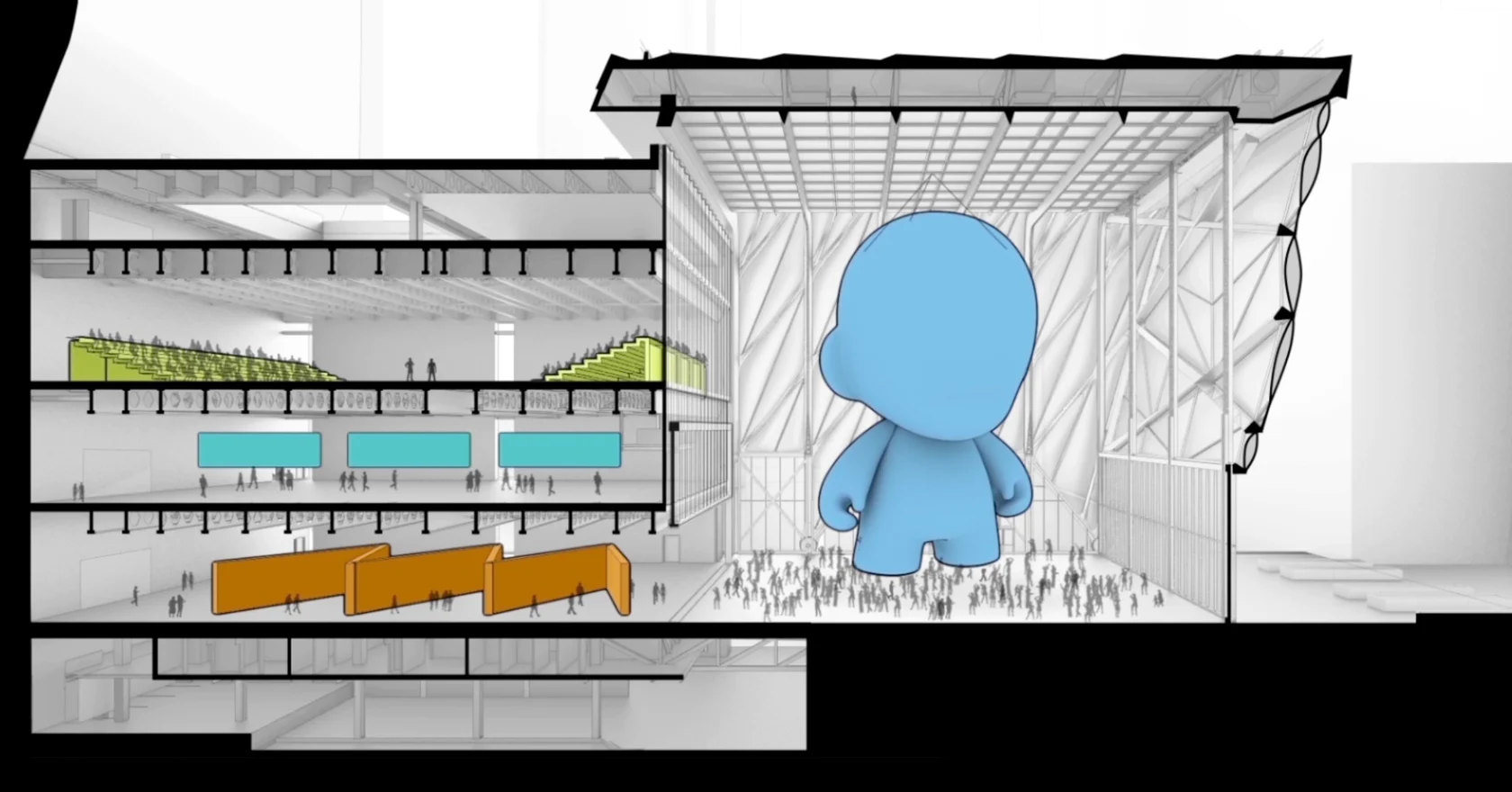
A proposal of The Shed.
Image courtesy of: Architizer
The idea behind the Shed drew inspiration from Cedric Price’s Fun Palace of (courtesy of Architizer), “an unenclosed steel structure set on traveling gantry cranes resulting in a movable form that would allow the public to control and rearrange their environment to host an array of activities.” Now, fourteen years after the British architect’s passing, DS+R designed The Shed as a sort of homage to Price.
The building’s base is comprised of two column-free galleries that total 25,000-square-feet. The 500-seat black box theater can be subdivided to provide more intimate spaces. The divided spaces can also be used for event and rehearsal areas. Finally, a creative lab provides free space for budding, local artists.
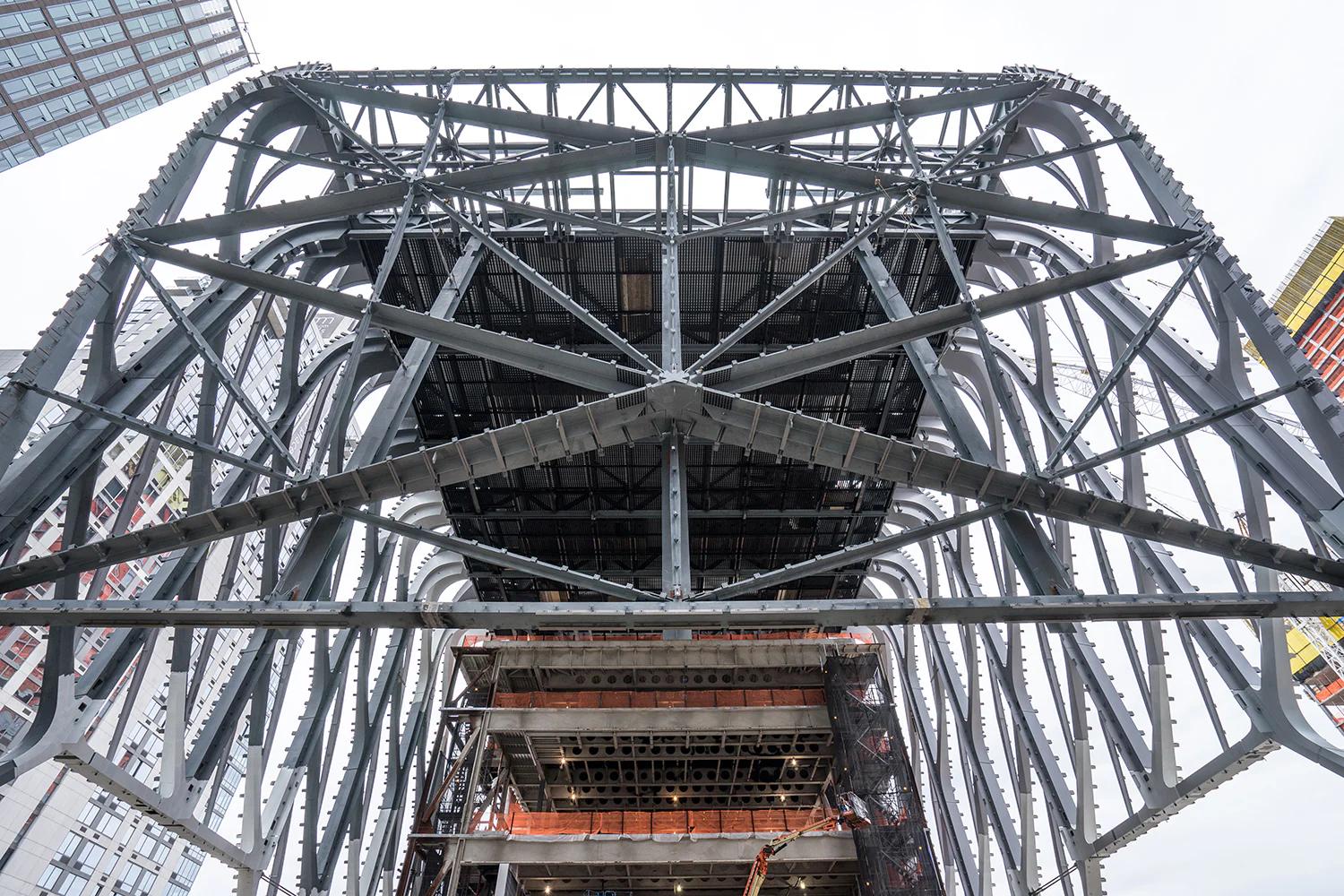
Construction of the immovable frame. The kinetic system compliments the High Line and the West Side Railyard’s industrial history.
Image courtesy of: Architizer
The real show-stopper however is the outer-shell which is clad in ethylene tetrafluoroethylene (ETFE) “pillows.” The result is a 17,000-square-foot hall that is sound-, temperature-, and light-controlled when completely in use, over the adjacent 20,000-square-foot plaza.
Due to flexibility the theater is able to seat 1,250 people or a standing audience of 2,700. “The ceiling acts as a theatrical deck and fly loft where rigging can be set up across the entire volume of space above the audience.” When it is not being used, a 4,040-ton steel shell rests on the building’s base after it is pulled back on a double-wheel track. Interestingly, the track’s construction is based on gantry crane technology that is typically found in shipping yards.
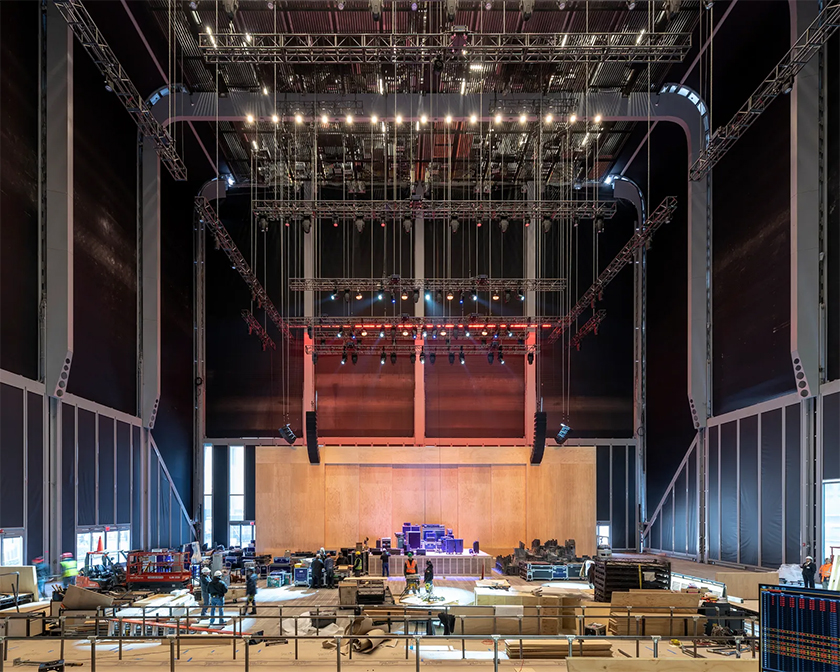
A photograph of the main performance hall’s nearly-completed interior.
Image courtesy of: Architectural Digest, photographed by: Iwan Baan
New York City is always at the forefront of culture; as such, the Shed hopes to be the one cultural institution that is “all about the future.” Alex Potts, the Shed’s artistic director and CEO told Architectural Digest, “The Shed is a place for curiosity, adventure, and risk-taking. It’s where a wide range of artists and even wider range of audiences can meet.”
To further ensure that this is not another institution just for the “rich and famous,” Potts has ensured that $10 tickets will be available and that a program called Open Call will offer free performances for local up-and-coming artists. This, we love!
